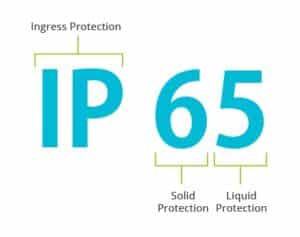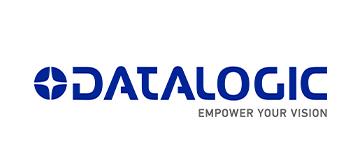Android Mobile Computers
Choose the correct Android mobile device for your application
For more information click on the images below to see our mobile computer portfolios
Designed to deliver mobile productivity and real-time data insights into business-critical information, SONRA ID Solutions versatile line of mobile computers range from rugged industrial class devices to enterprise digital assistants and shopping systems. With our mobile computers, your customers can track inventory more efficiently and accurately, manage production more effectively and improve delivery accuracy —even in the harshest environments.
SONRA ID Solutions, together with our partners Datalogic and Zebra cover all your business and industry needs to enable your mobile workforce.
Do you have a requirement for mobile computers or a full mobile solution?
Mobile Computers – Basic Concepts
Operating System
Schematic

Overview
Android is a mobility phenomenon.
Strictly speaking in fact, it’s THE mobility phenomenon. Android is familiar to billions of people across the globe. Its devices, interface, apps, logo. Now widely used in Chromebooks, TVs, wearables, and even cars, as well as mobile devices, astonishingly Android can now be found on four in every five consumer handhelds.
Indeed, having gained and retained the lion’s share of the global smartphone market, Android is now officially the world’s most popular, dominant mobile operating system (OS).
And all in just eight short years.
Extraordinary in its speed and scope, this rise has come about for all kinds of reasons.
Why Android as an OS?

CUSTOMISATION & FLEXIBILITY
Supported by a massive development community across the globe, Android is incredibly agile and easy to customise.

EASE-OF-USE
Android is used worldwide and has a low learning curve for operators and users.

DATA SECURITY
Personal and company data are easily compartmentalized providing full security for your business operations
![]()
COST
Android OS is cost-effective and managing and developing applications is straightforward.

EVOLUTION
Since 2010 a vast amount of work has gone into optimising Android for enterprise usage making it a more secure environemnt for teh enterprise.
Use Environment
Schematic

IP Rating
The IP Code, or Ingress Protection Code, IEC standard 60529, sometimes interpreted as International Protection Code, classifies and rates the degree of protection provided by mechanical casings and electrical enclosures against intrusion, dust, accidental contact, and water.
IP Ratings – what they mean.
First Digit (intrusion protection)
- No special protection. Not rated (or no rating supplied) for protection against ingress of this type.
- Protection from a large part of the body such as a hand (but no protection from deliberate access); from solid objects greater than 50mm in diameter.
- Protection against fingers or other object not greater than 80mm in length and 12mm in diameter (accidental finger contact).
- Protection from entry by tools, wires etc, with a diameter of 2.5 mm or more.
- Protection against solid objects larger than 1mm (wires, nails, screws, larger insects and other potentially invasive small objects such as tools/small etc).
- Partial protection against dust that may harm equipment.
- Totally dust tight. Full protection against dust and other particulates, including a vacuum seal, tested against continuous airflow.
Second Digit (moisture protection)
- No protection.
- Protection against vertically falling droplets, such as condensation. ensuring that no damage or interrupted functioning of components will be incurred when an item is upright.
- Protection against water droplets deflected up to 15° from vertical
- Protected against spray up to 60° from vertical.
- Protected against water splashes from all directions. Tested for a minimum of 10 minutes with an oscillating spray (limited ingress permitted with no harmful effects).
- Protection against low-pressure jets (6.3 mm) of directed water from any angle (limited ingress permitted with no harmful effects).
- Protection against direct high pressure jets.
- Protection against full immersion for up to 30 minutes at depths between 15 cm and 1 metre (limited ingress permitted with no harmful effects).
- Protection against extended immersion under higher pressure (i.e. greater depths). Precise parameters of this test will be set and advertised by the manufacturer and may include additional factors such as temperature fluctuations and flow rates, depending on equipment type.
Drop & Temperature
Drop Specifications
All handheld computers should include a drop specification that describes the device’s ability to withstand the shock of a fall to a hard surface. For obvious reasons, the drop specification is extremely important and cannot be overlooked. If a device cannot withstand a drop from a reasonable distance, then its life will be extremely short.
Most ruggedized handheld computers can withstand a 4-foot drop to concrete.
Another important aspect to consider is the testing procedures used to verify a product’s drop specification. A product should be dropped on all sides to verify its ability to withstand shock from any direction.
For example, a computer’s display can be very sensitive to the shock associated with a drop. The drop test should include all sides to verify that the display, and other sensitive components will withstand the shock and operate properly.
It is important to pay close attention to the details included with the drop specification, because many manufacturers will claim 6-foot drops to a “hard surface”. This can be misleading, because the term “hard surface” is open for interpretation. Concrete is usually the standard surface used for proper testing, and the drop specification should be questioned if this is not clearly stated.
It is also important to verify that the standard product meets the drop specification and that a separate protective accessory is not required (i.e. case, rubber boot, etc).
Temperature Specifications
All ruggedized computers will include operating and storage temperature specifications. Industrial mobile computers can be exposed to extreme temperatures, especially if a device is used outside, or in a freezer (cold storage) environment.
Cold storage environments usually require that a device operate down to -30C (-22F) temperatures. In order for a device to successfully operate in this extremely cold environment the device must be manufactured and specifically rated.
Applications
Schematic

Application Types
Applications can be broken down into two broad sectors
Standard or off-the-shelf
- These applications are pre-developed, packaged and ready to use. There is minimal customisation available for the end user.
- They tend to be lower cost and possibly available as a service, SAAS
- Due to low customisation the end user may have to adapt their process or workflow to suit the application
Custom or Bespoke
- These applications are developed specifically to meet the end user’s requirements
- A higher cost can be possible due to custom development
- The developed application can be “future proofed” to match the ongoing needs of the end user, unlike standard applications
Verticals
Mobile Computers, and their associated applications are used worldwide and throught many business and industries, including:-
- Manufacturing
- Distribution
- Logistics
- Law Enforcement
- Surveying
- Retail
- Inventory Management
and many, many more……


